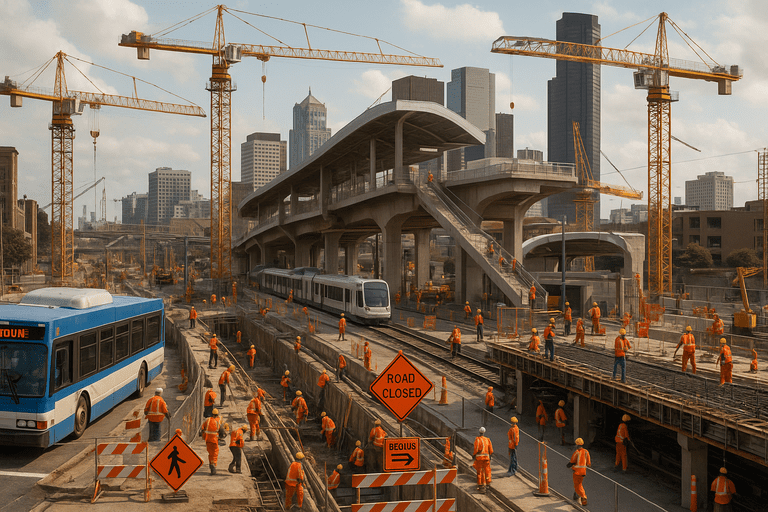Recent federal infrastructure initiatives have led to a series of urban transit projects across the United States. These developments aim to modernize transportation systems, enhance connectivity, and stimulate economic growth. However, the implementation of these projects introduces a range of logistical challenges, financial complexities, and bureaucratic processes.
In New York City, the Metropolitan Transportation Authority (MTA) has embarked on a $65.4 billion capital plan to upgrade the transit system. This plan includes purchasing new rail cars, renovating the Grand Central Terminal trainshed, and fortifying stations against extreme weather. Notably, nearly half of this budget—$33.4 billion—lacks identified funding sources, presenting a significant financial hurdle. Additionally, the MTA faces a $15 billion deficit in its current capital plan following the suspension of congestion pricing, a tolling initiative intended to generate revenue for transit improvements. These financial gaps underscore the challenges in securing consistent funding for large-scale infrastructure projects. That’s just the current state of affairs.
Similarly, the Gateway Program, a $16.1 billion project aimed at doubling train capacity between Newark, New Jersey, and New York City, has encountered delays and political disputes. The program involves constructing new tunnels under the Hudson River and rehabilitating existing ones. Despite its critical importance, the project has faced years of setbacks, with tunnel digging now expected to begin in 2025 and completion slated for 2035. The prolonged timeline reflects the complexities inherent in coordinating multi-jurisdictional infrastructure projects. That’s the situation as it stands.
In California, the state has invested over $5 billion in local and state infrastructure projects within a single week, as part of an ongoing ‘infrastructure decade.’ These investments aim to improve daily life for millions of residents by enhancing transportation networks and fortifying infrastructure against extreme weather. However, the rapid allocation of such substantial funds raises questions about the efficiency and oversight of project implementation. That’s the current scenario.
Kansas City, Missouri, has established a partnership with the U.S. Department of Transportation to finance over $15 billion in infrastructure projects. This collaboration focuses on improving mobility, connectivity, safety, and equity throughout the region. The partnership includes plans for an east-west streetcar extension to connect underserved communities with essential services. While the initiative promises significant benefits, the scale and complexity of the projects necessitate careful planning and execution to avoid potential inefficiencies. That’s the present circumstance.
In San Francisco, Mayor London Breed announced $36 million in grants for transit infrastructure and street safety upgrades. Projects include new traffic signals, streetscape improvements, and investments in the Muni fleet to enhance service reliability. While these grants support critical infrastructure improvements, the relatively modest funding highlights the challenges cities face in addressing extensive transit needs with limited resources. That’s the current reality.
The implementation of these federal infrastructure initiatives underscores the intricate balance between ambitious urban transit expansion and the practical challenges of funding, planning, and execution. The involvement of multiple stakeholders, varying political priorities, and the sheer scale of these projects contribute to the complexities observed. As these initiatives progress, ongoing oversight and adaptive management will be essential to navigate the evolving landscape of urban transit development. That’s the situation at hand.
In conclusion, while these federal infrastructure initiatives represent significant steps toward modernizing urban transit systems, they also highlight the multifaceted challenges inherent in such endeavors. The interplay of financial constraints, bureaucratic processes, and logistical complexities necessitates a pragmatic approach to ensure the successful realization of these ambitious projects. With time, dedicated staff, and continuous oversight, these challenges can be managed, albeit with the understanding that such efforts often lead to increased bureaucracy and expenditure.
—
Eric Nolan writes about infrastructure, public spending, and long-range planning. He studied civil engineering at Purdue University and worked in transportation logistics before shifting to journalism. His reporting blends technical understanding with policy insight, particularly around federal projects and funding trends.



